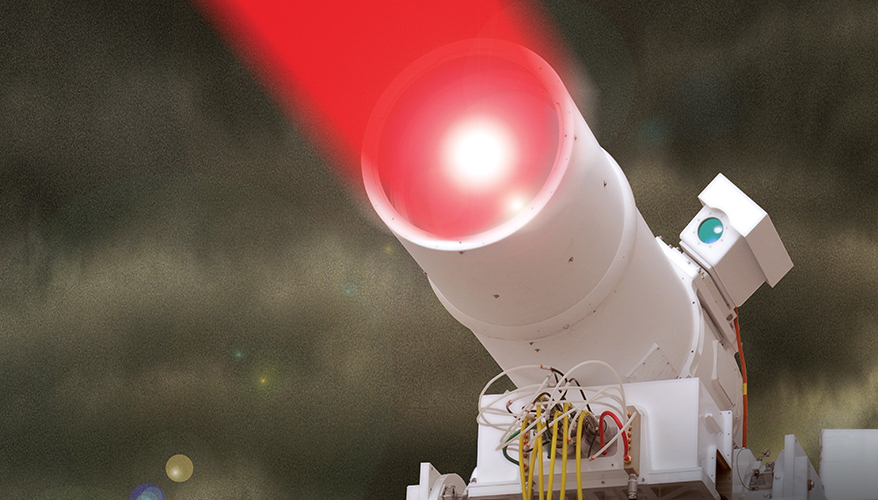La guerra en curso entre Ucrania y Rusia refleja el futuro de la guerra: una lucha multidominio en tierra, mar, aire, espacio y ciberespacio. Es un conflicto mixto entre teatros físicos y electrónicos. El impacto de la Energía Dirigida (DE), específicamente en la guerra moderna, podría ser profundo: es una tecnología disruptiva con el potencial de transformar el campo de batalla. El país que pueda desarrollar y desplegar esta tecnología a escala tendrá una clara ventaja estratégica sobre los adversarios.
The ongoing Ukraine-Russia war reflects the future of warfare: a multidomain fight across land, sea, air, space and cyberspace. It is a conflict blended between physical and electronic theaters.
It also reveals a future in which urban combat among large civilian populations is the norm, and next-generation capabilities such as unmanned aerial vehicles and hypersonic missiles are brought to bear — to say nothing about conventional infantry, ground vehicles, artillery and aircraft.
Foundational to achieving overmatch in this warfighting continuum and defeating emerging threats is a multi-layered defense architecture that harnesses the full breadth of the military and intelligence infrastructure. As the tip of this spear, warfighters and vehicles must be equipped with a range of electronic warfare technologies such as artificial intelligence, edge computing and directed energy.
The impact of directed energy, specifically on modern day warfare, could be profound — it is a disruptive technology with the potential to transform the battlefield. The country that can develop and field this technology at scale first will have a distinct, strategic advantage over adversaries, with the ability to counter a range of emerging threats from drone swarms to vehicle borne improvised explosive devices to hypersonic missiles.
Directed energy is a uniquely versatile technology family, with several subsets that can be tailored to different applications, and some that can even be dialed to fulfill different functions. It could be used to neutralize enemy combatants nonlethally and avoid material damage or civilian casualties. It could fry the electronic systems in a swarm or flotilla of hostile small boats. A high-energy laser could be used to disrupt and destroy a hypersonic missile with pinpoint accuracy at long range. These are the types of scenarios, among many, where directed energy can be a game changer.
Emerging threats that cannot be countered cost-effectively by kinetic means are making directed energy weapons increasingly essential. And now, the rapidly increasing maturity of the technology offers more return on investment than ever.
Beyond their versatility, the systems offer a slew of benefits that include deep magazine capacity, a more simplified resupply logistics strategy, low cost per shot, speed-of-light engagement and extreme accuracy.
Their stealth-like characteristics make them hard to detect and difficult to intercept. These properties and their electronic nature prime them for artificial intelligence enhancement, pulling insights like atmospheric conditions and complex geometric targeting calculations and weapon-target pairing. This technology pairing maximizes directed energy’s potential in areas like counter- rocket, artillery and mortar, allowing a system to track, target and destroy explosive ordnance mid-flight.
Directed energy has become an operational necessity. This technology, which has been identified as a critical technology area by the office of the undersecretary of defense for research and engineering for years, is ready to become one of the layers in the defensive architecture needed for our national security.
How do we get these weapons into the hands of warfighters? To advance its current capabilities beyond the prototype phase, the United States must increase funding for vital research and development, use streamlined acquisition practices to accelerate deployment at scale and ensure we have the testing and training capabilities needed to bring these weapons out of the lab and onto the battlefield.
Directed energy weapons are not limited by technology barriers, but rather by the lack of funding being allocated to support them.
Congressional funding for the field currently stands at about $1 billion per year; an increase to $2 billion to $3 billion per year would have an enormous impact.
While Congressional leaders have recently made the development and experimental fielding of the weapons a greater focus — including the designation of a senior official tasked with accelerating the transition of the weapon systems into the field — more funding is needed.
To ensure the broad adoption of directed energy systems into a layered defense architecture, the nation must take several other steps.
It should promote accelerated acquisition approaches to put directed energy capabilities into the hands of warfighters in quantities that have true operational significance.
It should use operational prototypes to gather data from the field, inform system integration efforts with warfighter experience, deliver near-term directed energy military utility and produce the warfighter confidence needed for system adoption, including developing tactics, techniques and procedures.
It must implement policy changes and increase collaboration between parties to make it easier to progress toward operational use for the weapons and allow their deployment.
Also, it must empower the services to develop and implement operational strategies for deployment and use, tailored to match adversaries’ capabilities across all warfighting domains.
The department should provide a clear roadmap to industry to enable the industrial base — including second and third-tier suppliers — to make needed investments and have the capacity to deliver when greater quantities are procured.
And finally, it should set realistic goals for the technology by understanding what it is currently capable of and what is needed operationally in a layered defense architecture and maintain commitment to the technology as it matures to take on more complex challenges.
As for industry, it must make accelerated efforts to meet the size, weight and power requirements necessary to bringing directed energy systems to the field. These investments are best informed by the Pentagon providing clear operational requirements and design reference missions that quantify the requirements uniquely for each service application.
It’s imperative for Congress to continue to fund these efforts.


